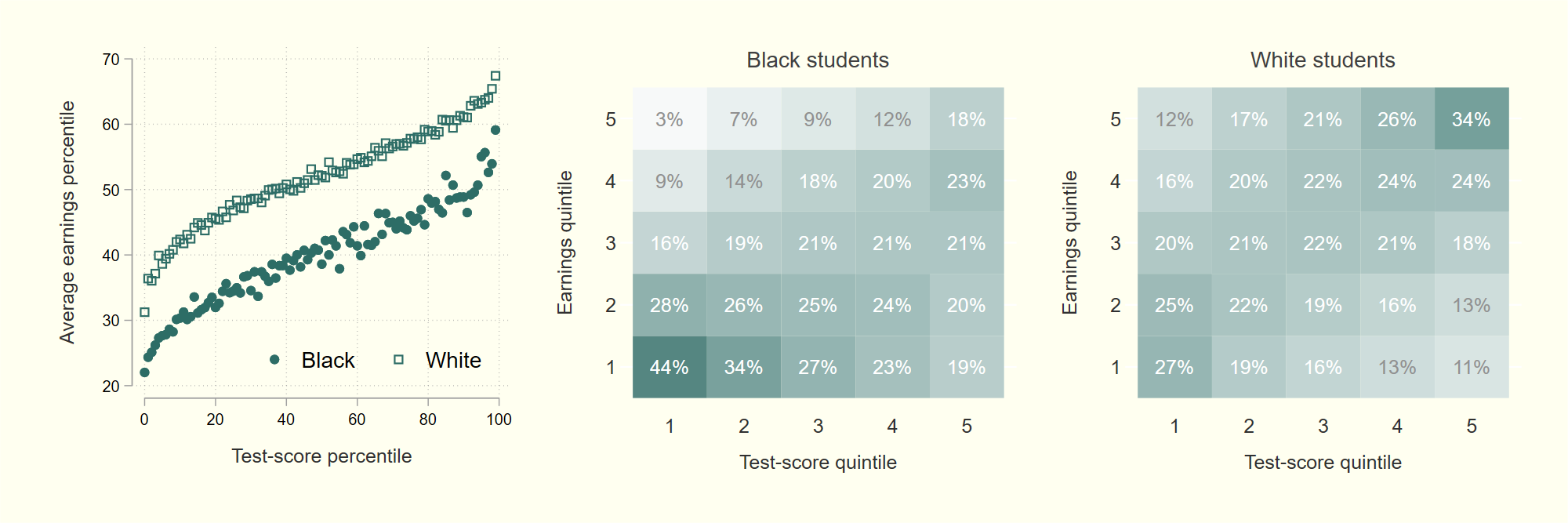Above: We first show just how different the test scores of Black and white students are: In the top one percent of all test takers in Texas public schools, for example, white students outnumber Black students fifty-to-one; in the lowest achieving percentile, Black students outnumber white students instead three-to-one. We then show that, for any given level of achievement, Black students are (i) much less likely than their white counterparts to be enrolled consistently in gifted programs; (ii) much more likely to attempt a college degree of any kind, particularly at the lower end of the test-score distribution, although less likely (not pictured) to complete those degrees; and (iii) earning significantly less, even at the very top of the test-score distribution, where the gap is close to $20,000 annually.
Link to working paper
Abstract
We bring new data to the longstanding achievement gap between Black and white children in the United States. Constructing a panel of nearly half a million children tracked from kindergarten through age 30, we first highlight the stark differences in test scores between Black and white students, particularly at the extremes. In the lowest achieving one percent of all test takers, for example, Black students outnumber white students three-to-one. In the top one percent, white students outnumber Black students fifty-to-one. We then compare the outcomes of students with the same test scores, which provides useful context for other racial disparities in the United States. We show, for example, that Black students with high levels of achievement are substantially less likely than white students with the same scores to be in gifted programs. At the same time, Black students with low test scores are substantially less likely to be in special education programs. We show that Black students with low test scores, and only Black students with low test scores, are more likely than their white counterparts to drop out of high school. Across the distribution of achievement, Black students, relative to white students with the same achievement, are nonetheless more likely to enroll in college. However, they are still significantly less likely to complete a college degree of any kind. We also show that Black students, at any given level of achievement, which is often regarded as a level of skill, earn substantially lower wages than their white counterparts, nearly $10,000 less annually, a gap that bears almost exclusively on Black men. None of these disparities conditional on test scores, can be fully explained, or even mostly explained, by schools: Substantial differences exist between Black and white students who obtained the same scores while attending the same schools.
Disclaimer: The conclusions of this research do not necessarily reflect the opinion or official position of the Texas Education Research Center, the Texas Education Agency, the Texas Higher Education Coordinating Board, the Texas Workforce Commission, or the State of Texas.

